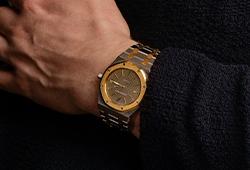Cyrus Edwin Dallin
"Appeal of the great spirit"
Signed © C.E. Dallin and dated 1913. Foundry mark
Gorham Co. Founders QPN and numbered, no 10. Bronze, brown patina. Height 54.5 cm.
Kirjallisuus
Harold Berman, "Bronzes, Sculptors & Founders 1800-1930", 1977, volume III, compare no 2739, p. 756.
Muut tiedot
Curuys Edwin Dallin came to be one of the American artists that through his art raised the awareness of the Native American population. Dallin grew up in one of the gateway cities to the great prairies in Utah and through his childhood he came to discover and live side by side with the Native Americans tribes that populated the Grand Canyon. These experiences gave Dallin an understanding of the integrity and culture of the tribes. After a few years as a sculptor apprentice in Boston, Dallin left for Paris. There he encountered a fascination for the American Native population, and this culminated when “The Buffalo Bill Show” came to Paris in 1889. After this encounter he returned to the artistic subjects of this youth: the life and culture of the Native Americans. After returning back to America Dallin executed several sculptures with these subjects and they were greatly appreciated by the public. He also won several public commissions of American historical figures such as Paul Revere.
“Appeal of the Great Spirit” was first shown in Baltimore in 1908 and come to win the Gold Medal at the Paris Salon in 1909. It now stands as a monumental equestrian statue in front of Boston Museum of Fine Arts. The sculpture shows the resignation of the Native American Chief and his appeal to the Great Spirit that rules the universe.














































